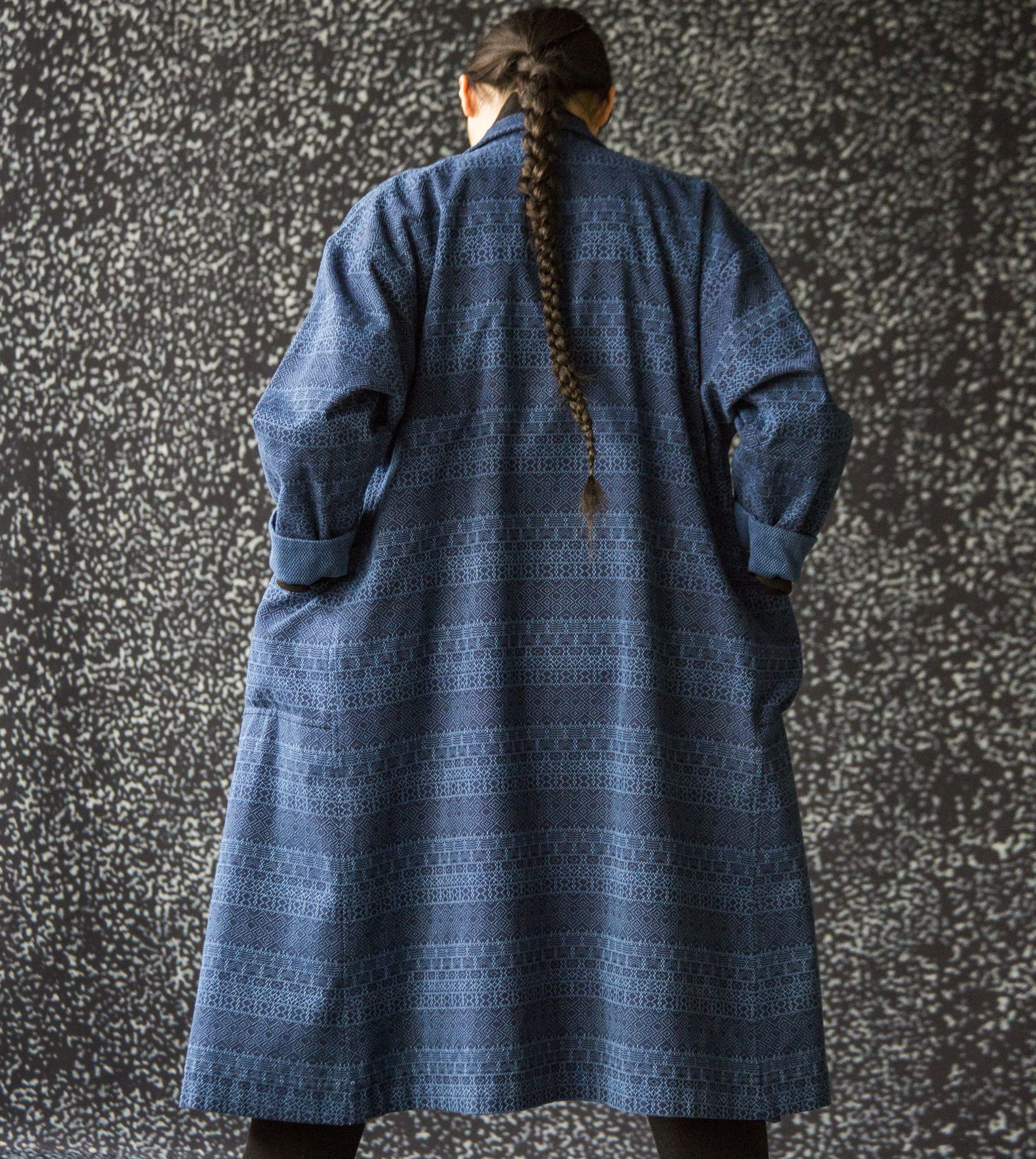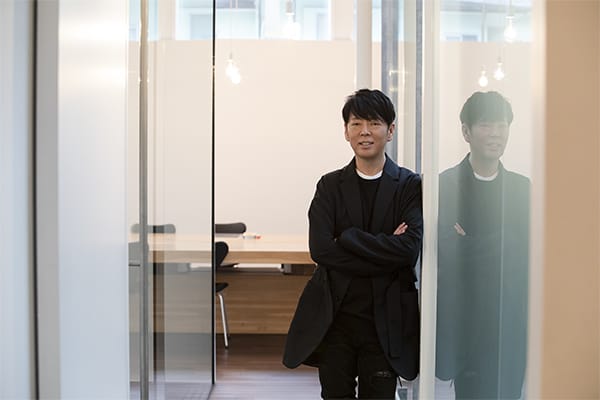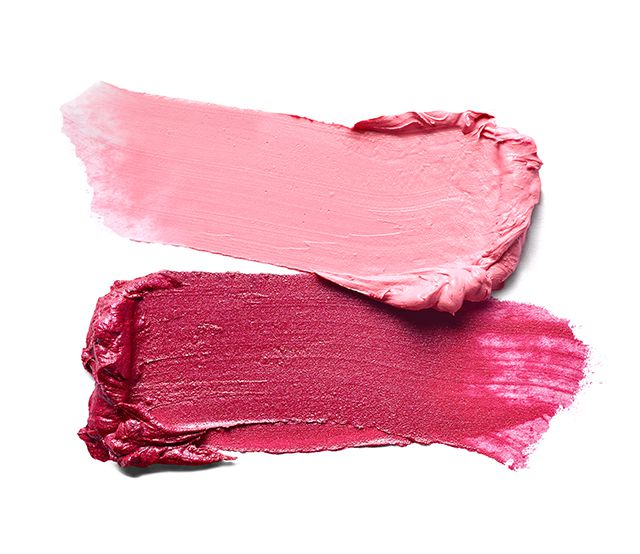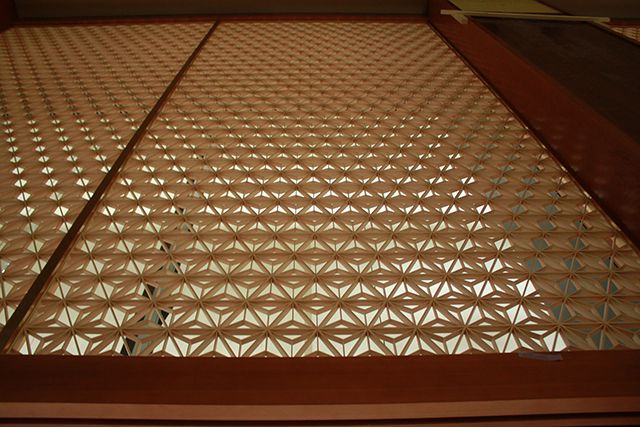HaaT started as a brand imagined from textiles in 2000. Makiko Minagawa is the creative director who is behind the creation of the new worldview in integrating clothes and magnificent textiles made by traditional fabrics and techniques from Japan and India.
Spoken by Makiko Minagawa
It was during the 1970’s when I first met Mr. Miyake. At that time, I was thinking about studying abroad at London while I happened to be invited to the “TORAY Knit Exhibition”. At the exhibition, I felt that Mr. Miyake’s fashion was the best design out of all the numerous works by world-renown fashion designers. When I had the chance to speak to Mr. Miyake and introduce myself he said, “If you can design textiles, why don’t we work together?” . He invited me to work with him and I decided to work at the Issey Miyake Design Studio.
After I started working at the studio, I became in charge of the development of new materials for Issey Miyake’s first Paris Collection. While keeping an eye on the needs of society and feeling the great expectation from Mr. Miyake who continuously pursuits to give new and small surprises, I was able to discover something new everyday and use my brain to the fullest with selecting and developing new materials.
Tradition is lost by only Protecting.
By Evolving, Tradition becomes a New Revolution.
The technology of the textile development continues to evolve and the needs of our time changes as well. From the 1990’s, ISSEY MIYAKE starts the use of pleats for their clothes. The use of synthetic fiber gradually increased but I tried to keep the connection with weavers, craftsmen and Japanese traditional techniques. I always had a strong wish to have more people to feel the warmth from the handworks and traditional techniques.
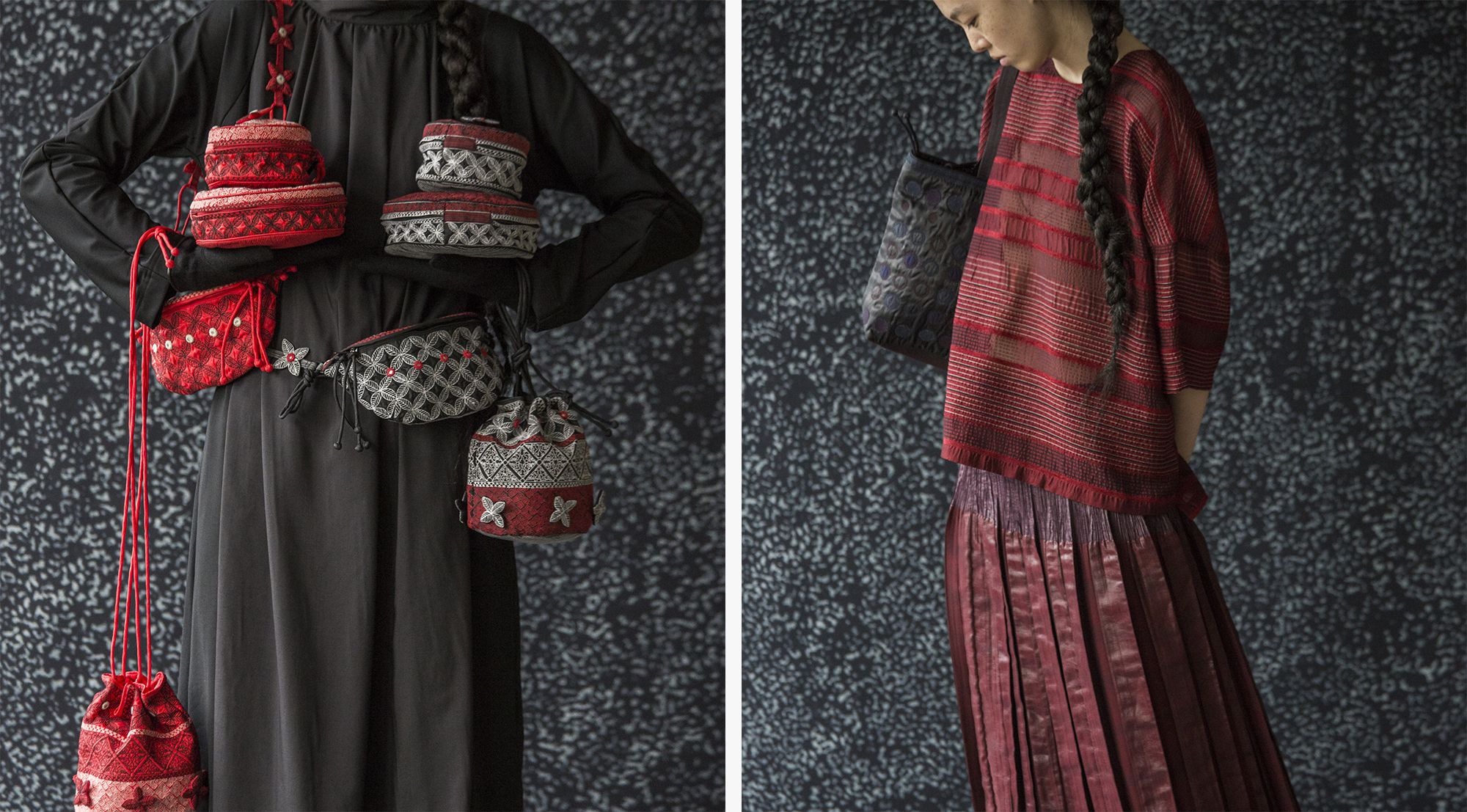

A Bag from “Tamasha” series and ta One-Piece Dress from “ORJ” (2019 AW Collection)
I think that tradition is similar to the water in the river. Even in Japan, traditional craftsmen are decreasing, and therefore it is important to continue to work with them. Like the water in the river, if the water just flows it will disappear one day, but sometimes a new current is created while flowing. This new creation is what builds the next age. This is the reason why I continue to create together with the craftsmen.
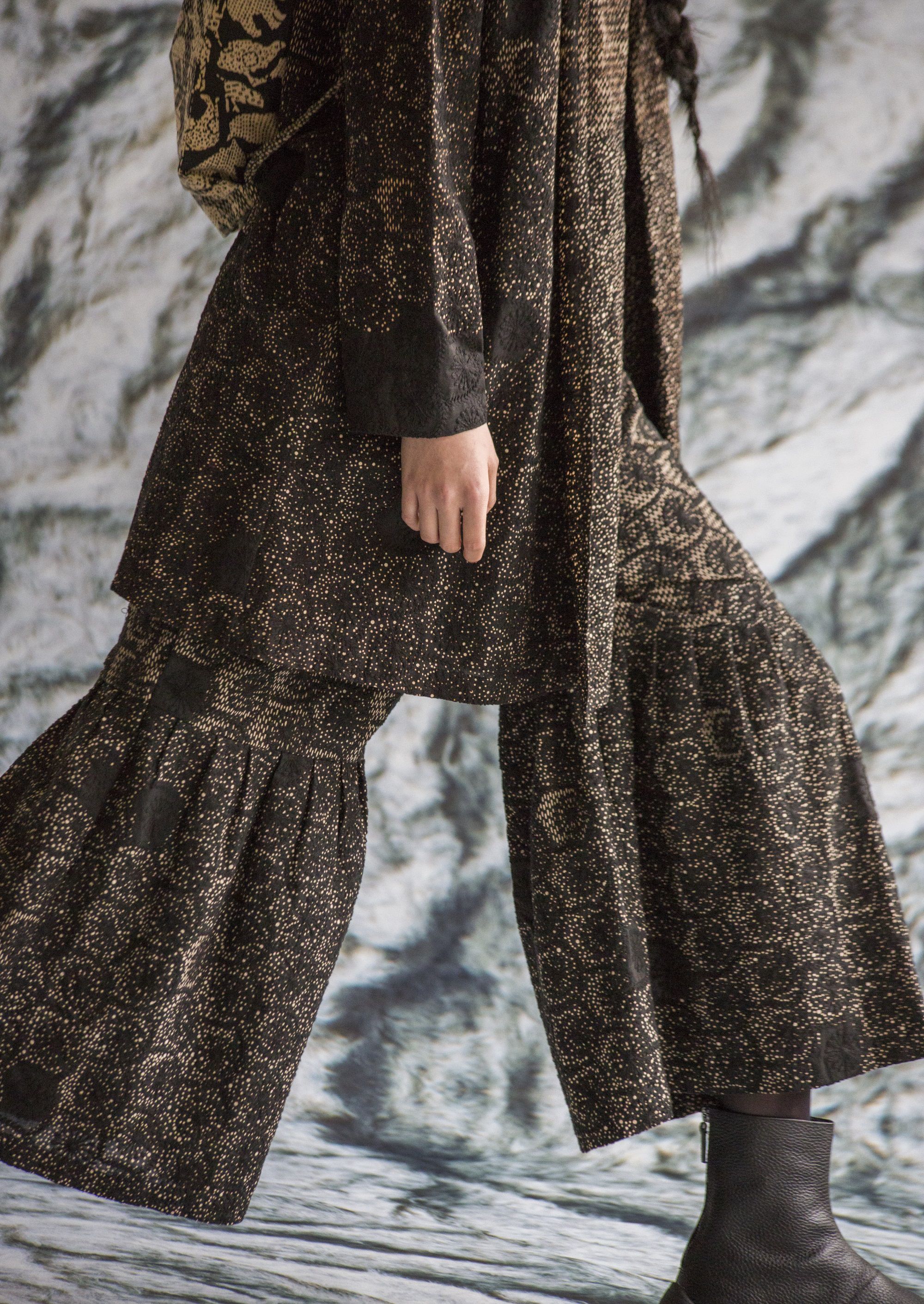

India’s Craftsmanship Series (2019 AW Collection)
HaaT mainly uses textiles made from fabrics and techniques from Japan (HaaRT) and India (HaaTH). Both textiles are high in quality and newly designed using HaaT’s idea to enhance the long established traditional techniques. For example, by airing the simple looking Sakizome (dyed yarn) with fulling process for wool, a three dimensional look is applied on the fabric. Another example is dyeing the motif of Paraguay’s traditional embroidery by Shibori (Tie-Dyeing) Technique using sewing machine. Other example is hand-cutting around the pattern of the embroidery and applying additional process. It is as if the materials goes beyond time with the integration of the past and future.
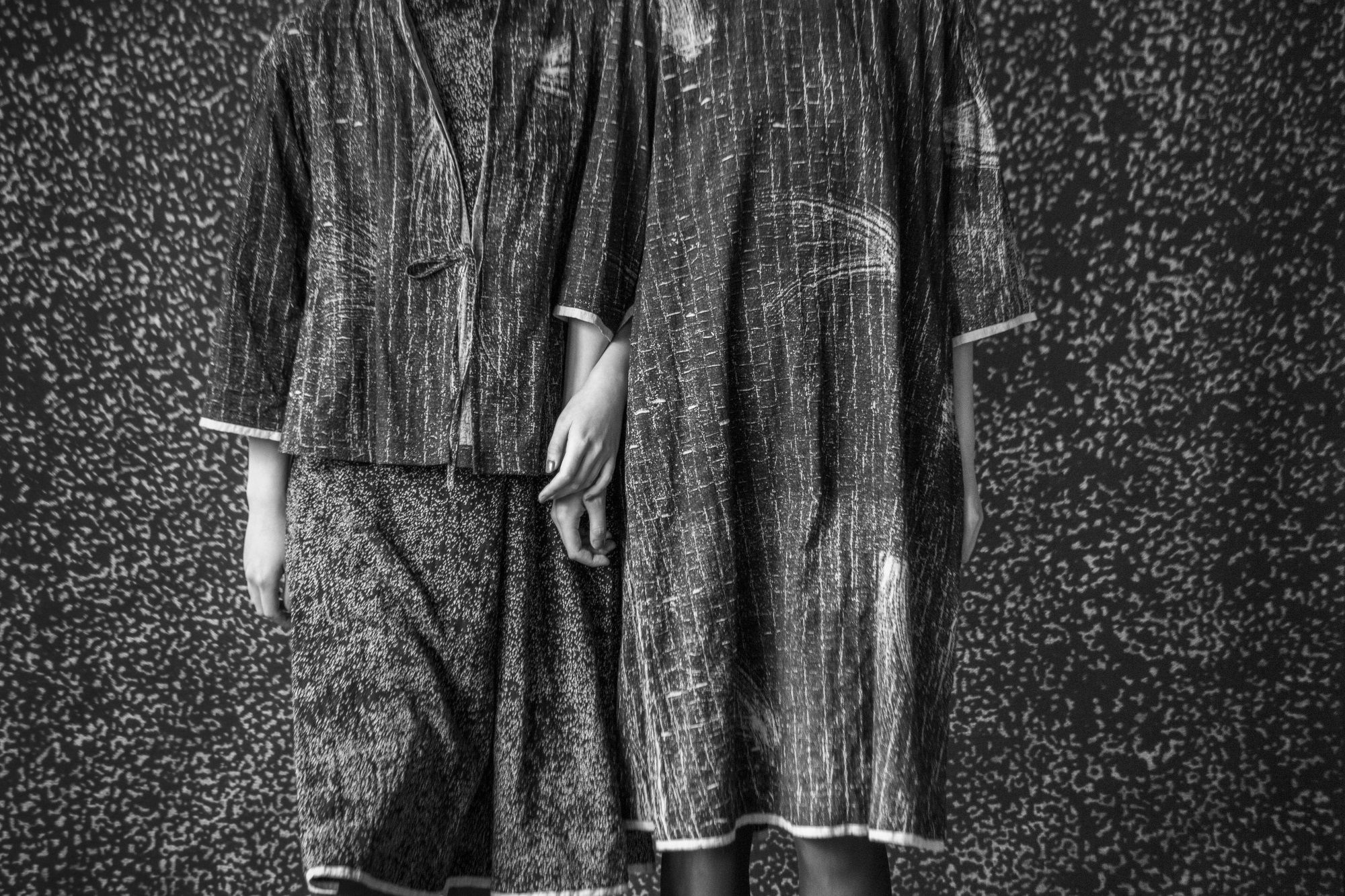

A printing technique called the Surihagashi is applied on the organic cotton material (2019 AW Collection)
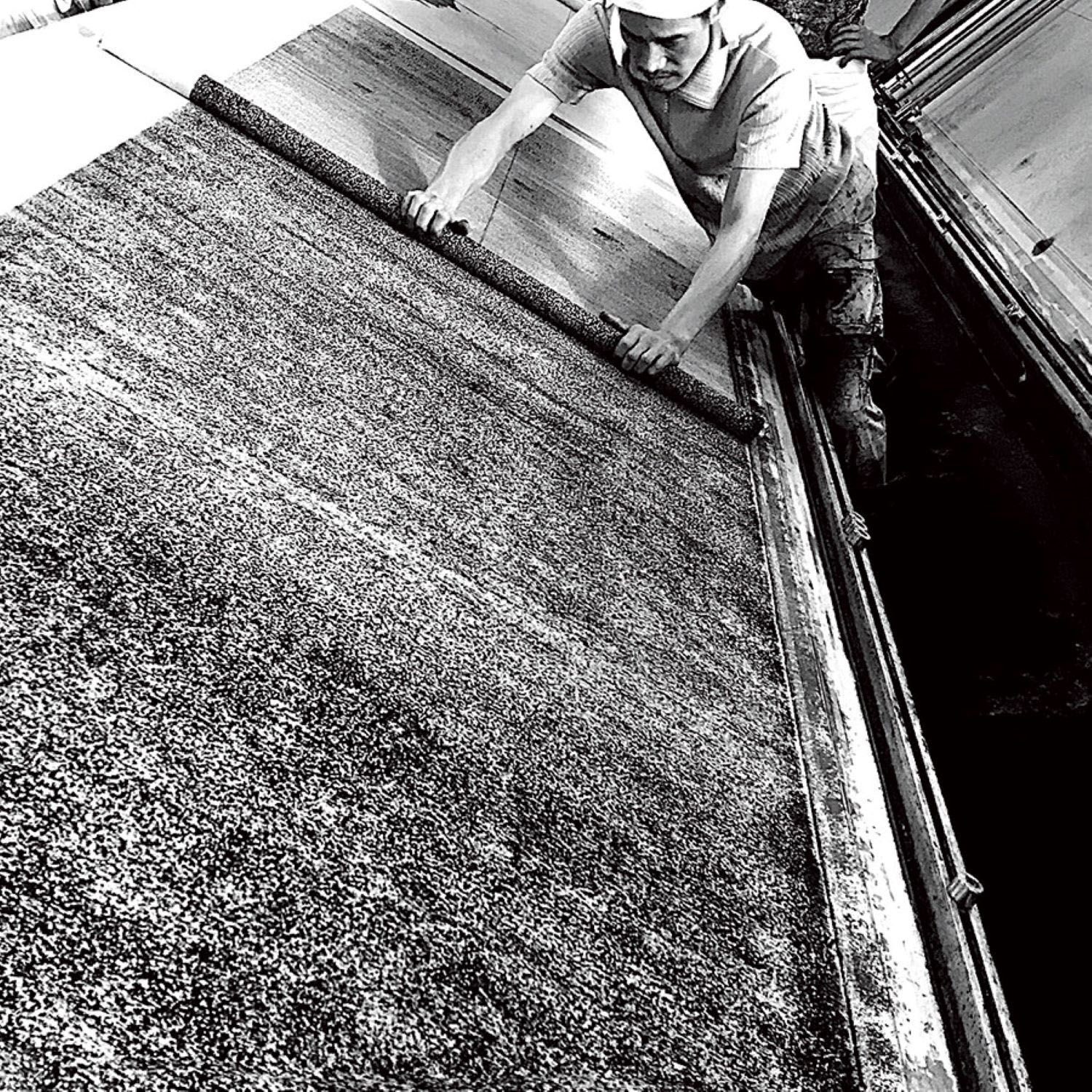

The Surihagashi is a unique artisanal technique passed down in Kyoto
The Surihagashi technique which was introduced this season is another example. Every color and paste is hand printed on to the fabric one by one using the brush on the hand printing table. A new textile is created by rubbing the patterns on to the fabric one by one similar to the Takuhon (rubbed copy). This hand-work is time consuming and very complex but the technique allows the fabric to become the one and only in the world.
It is the same with the Khadi, a textile fabric using traditional Indian technique. This technique have long supported the people’s lives in India. A time consuming effort is required from the hand spinning process of the strings and there are very few people who can still use this technique.
The textiles created by traditional techniques, cost, time and effort becomes a uniquely remarkable material. Although most people will worry about how our business can continue with such fabric requiring great amount of commitment. Seeing that I am still working, I can say that my long experience as a textile designer, the idea based from my experiences and the connection with the people have helped me up to this day. My feelings towards textile have never stopped and I will continue to search for new discoveries even today.
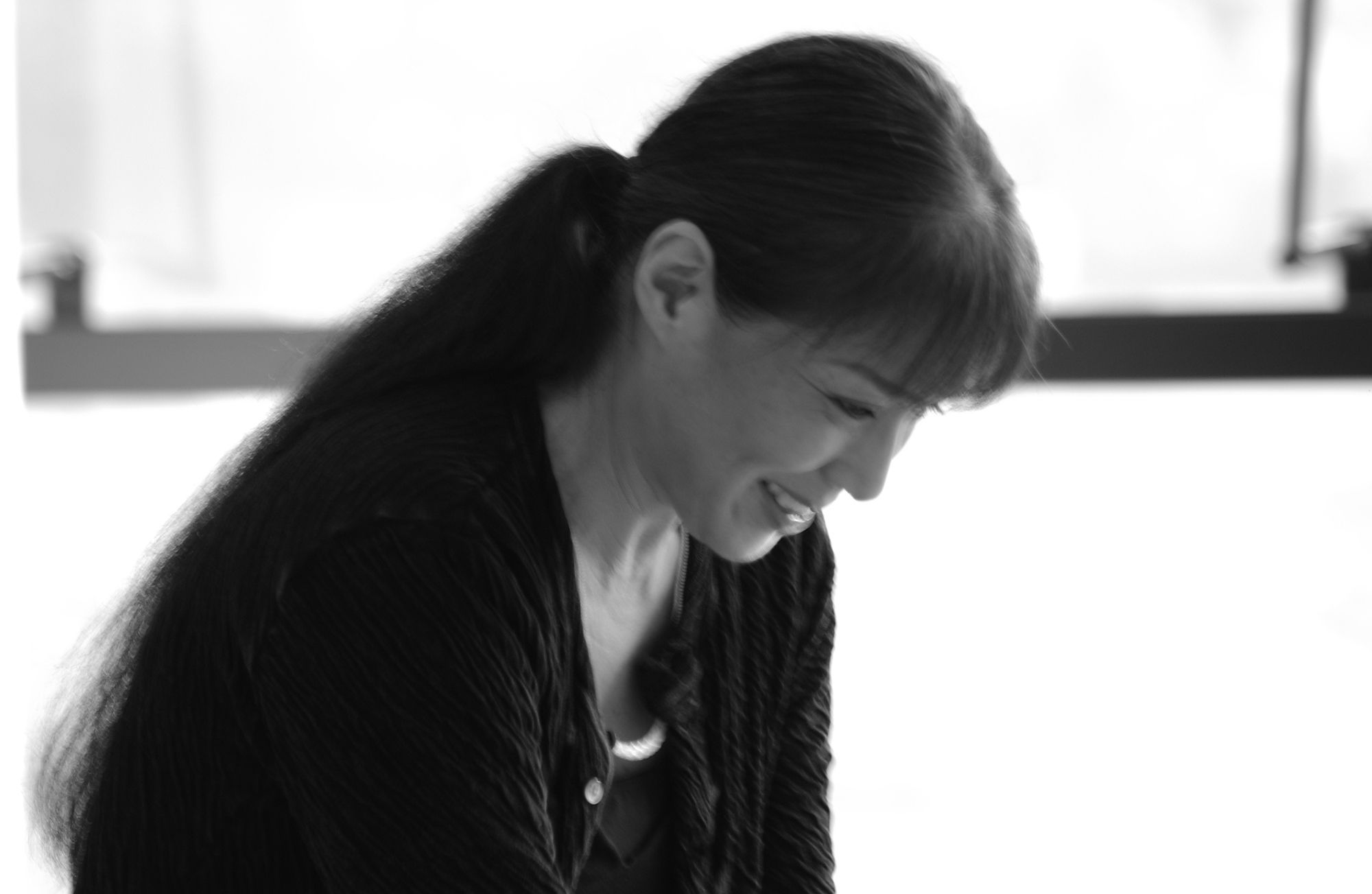

Profile
Makiko Minagawa
Textile Designer & HaaT Creative Director
Minagawa was educated at the Kyoto City University of Arts. She was already creating artworks as a dyeing and weaving artist during university. In 1970, Minagawa met with Issey Miyake and started to work as the textile designer at the Issey Miyake Design Studio from the following year. Minagawa established HaaT under Issey Miyake in 2000. She continues to research and develop as the creative director.
HaaT/ISSEY MIYAKE INC.
https://www.isseymiyake.com/haat/ja
Premium Salon
